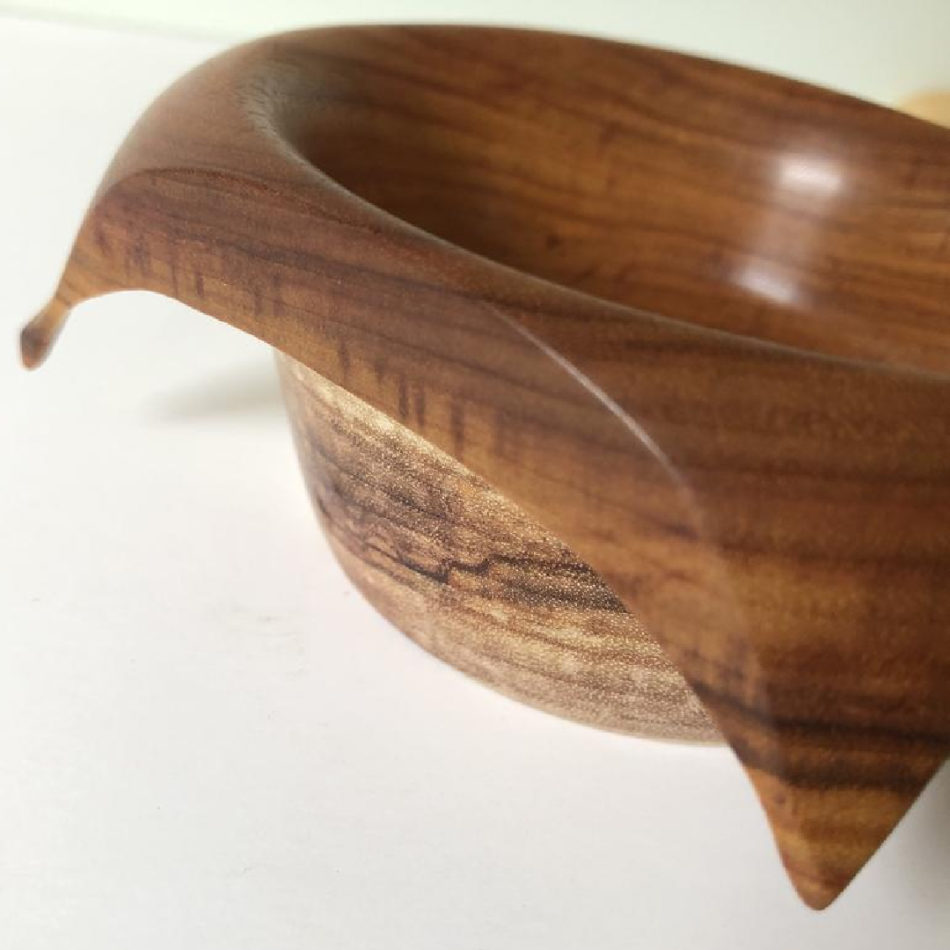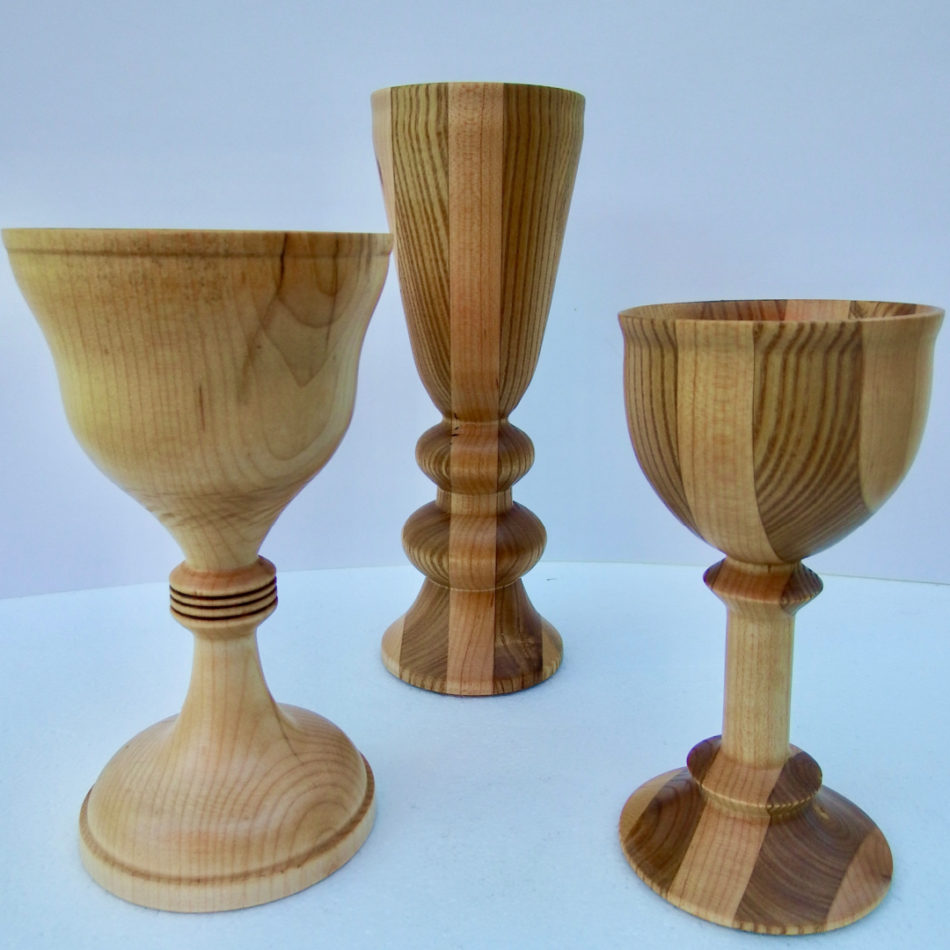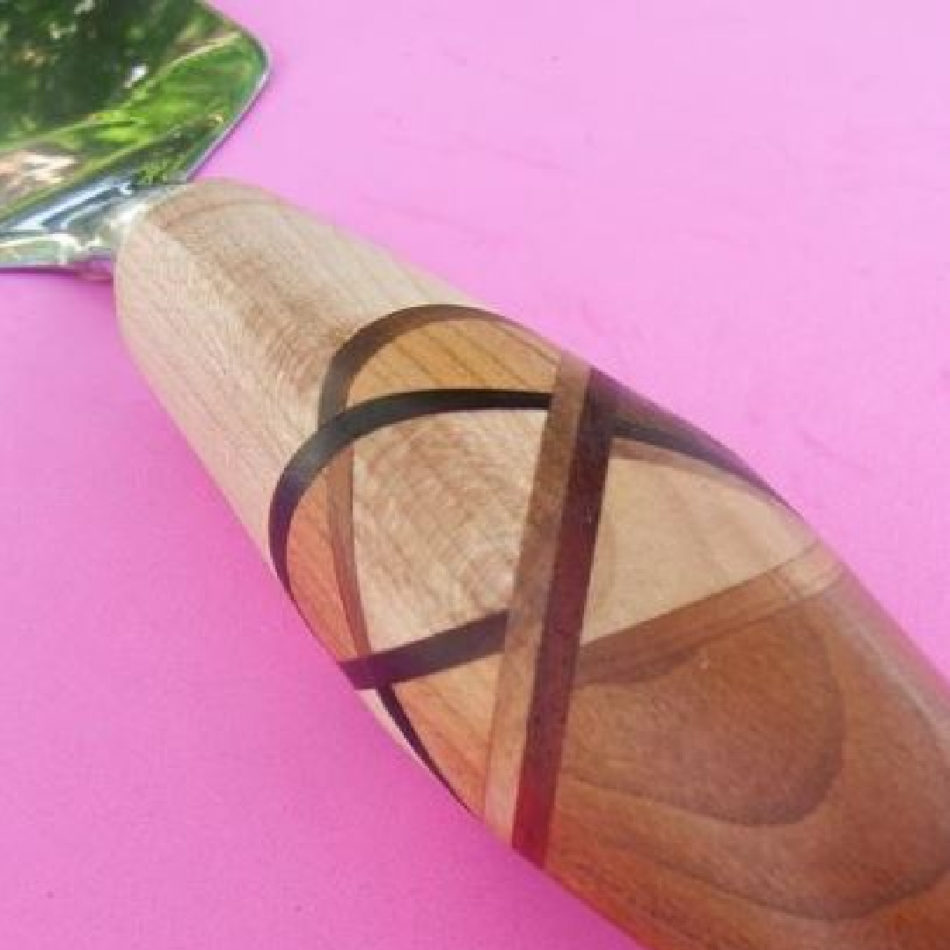ChaliceWorks Turning
Portland
- Retail
- Online
Overview
TURNING WOOD – REVEALING LIFE
THE TAG PHRASE HIGHLIGHTS THE LIFE HISTORY RECORDED IN THE RINGS OF TREE GROWTH AND THE LIFE HISTORY OF THE TURNER CREATOR WHO FASHIONS THE FORM HIDDEN IN THE LOG GIVING OPPORTUNITY FOR THE NEW LIFE EXPERIENCE OF THE PERSON WHO USES THESE ITEMS IN CURRENT HISTORY AND EXPERIENCES LIVING MEMORIES.
I began working with wood in a Jr Hi shop course. While fun and instructive the results were less than the “perfect” that I had learned was required for recognition and acceptance by the adult world of the mid twentieth century. Hi School offered no option for shop courses in the elite college prep tract, so I was limited to “self-taught” exploration with a few small tools: a back saw and hand block plane were discovered in a trash pile. With a file, rasp and C clamp I cleaned and “sharpened” these treasures and fashioned some imperfect boxes, towel racks, and napkin holders.
Construction summer jobs were my tool training and skill improvement labs. When I graduated from High School my Grandmother gave me a quilt she had made. The orange and white Jacobs Ladder pattern was awesome. I found one square that was backwards and two pieces of different color. “That is to remind you that nothing has to be perfect and to accept the variations that add life to what you do”, Nana said as she cut the remnant scraps for her next grandchild quilt.
While in grad school I began making furniture with my small collection of tools and scrap wood. In the storage locker basement of the married student dorm I set up a collapsible workbench. It took almost a year to craft an end table with tapered legs, inlay diamond, mortise and tendon sides, dovetailed drawer, and 20 inch square “flat” top with mitered breadboard edge. This Imperfect creation sits beside my bed today, and the heritage of other furniture are spread around family and friend’s homes.
A sculpture artist friend examined a colonial cherry hutch I made from odd lengths I found at a sawmill. He said, “An artist can tell you how you included your mistakes into your design. A master crafts builder can tell how your technique errors have been concealed to the non-observing eye”. Three weeks later that piece was appraised by an antique appraiser as “possible 1800 vintage in design, tool marking and irregular sizing of dovetails and trim molding tooling”.
So much for perfect! Every piece I finish includes the imperfect traces of mistakes lovingly caressed and comforted into acceptance as a parent unconditional acceptance of an errant child.
Turning became a primary interest in 2009 when I signed up for a course at Downeast Turning. It took three years to get a lathe of my own but I started to attend the Southern Maine Woodturners meetings and watched the demonstrations every month with growing resolve to “kiss the wood with the bevel”. Today I have turned over a thousand items that have been gifts, donations to fundraisers, and sold at events. Rosemont Artists Guild has been an inspiration and source of mentoring through learning the business side of being creative.
Now it is 2025 and I am learning the marketing skills of the trade. More time on the Mac than the Jet, and I have a new web page with products and StrawBoss Lathe Tails. <chaliceworksturning.com> And with the support of many who have encouraged me to stay active through forty five years of deminishing sight, I have learned many adaptive process skills to address skill and safety as a blind wood turner.





